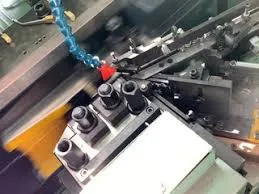
-
 Afrikaans
Afrikaans -
 Albanian
Albanian -
 Amharic
Amharic -
 Arabic
Arabic -
 Armenian
Armenian -
 Azerbaijani
Azerbaijani -
 Basque
Basque -
 Belarusian
Belarusian -
 Bengali
Bengali -
 Bosnian
Bosnian -
 Bulgarian
Bulgarian -
 Catalan
Catalan -
 Cebuano
Cebuano -
 Corsican
Corsican -
 Croatian
Croatian -
 Czech
Czech -
 Danish
Danish -
 Dutch
Dutch -
 English
English -
 Esperanto
Esperanto -
 Estonian
Estonian -
 Finnish
Finnish -
 French
French -
 Frisian
Frisian -
 Galician
Galician -
 Georgian
Georgian -
 German
German -
 Greek
Greek -
 Gujarati
Gujarati -
 Haitian Creole
Haitian Creole -
 hausa
hausa -
 hawaiian
hawaiian -
 Hebrew
Hebrew -
 Hindi
Hindi -
 Miao
Miao -
 Hungarian
Hungarian -
 Icelandic
Icelandic -
 igbo
igbo -
 Indonesian
Indonesian -
 irish
irish -
 Italian
Italian -
 Japanese
Japanese -
 Javanese
Javanese -
 Kannada
Kannada -
 kazakh
kazakh -
 Khmer
Khmer -
 Rwandese
Rwandese -
 Korean
Korean -
 Kurdish
Kurdish -
 Kyrgyz
Kyrgyz -
 Lao
Lao -
 Latin
Latin -
 Latvian
Latvian -
 Lithuanian
Lithuanian -
 Luxembourgish
Luxembourgish -
 Macedonian
Macedonian -
 Malgashi
Malgashi -
 Malay
Malay -
 Malayalam
Malayalam -
 Maltese
Maltese -
 Maori
Maori -
 Marathi
Marathi -
 Mongolian
Mongolian -
 Myanmar
Myanmar -
 Nepali
Nepali -
 Norwegian
Norwegian -
 Norwegian
Norwegian -
 Occitan
Occitan -
 Pashto
Pashto -
 Persian
Persian -
 Polish
Polish -
 Portuguese
Portuguese -
 Punjabi
Punjabi -
 Romanian
Romanian -
 Russian
Russian -
 Samoan
Samoan -
 Scottish Gaelic
Scottish Gaelic -
 Serbian
Serbian -
 Sesotho
Sesotho -
 Shona
Shona -
 Sindhi
Sindhi -
 Sinhala
Sinhala -
 Slovak
Slovak -
 Slovenian
Slovenian -
 Somali
Somali -
 Spanish
Spanish -
 Sundanese
Sundanese -
 Swahili
Swahili -
 Swedish
Swedish -
 Tagalog
Tagalog -
 Tajik
Tajik -
 Tamil
Tamil -
 Tatar
Tatar -
 Telugu
Telugu -
 Thai
Thai -
 Turkish
Turkish -
 Turkmen
Turkmen -
 Ukrainian
Ukrainian -
 Urdu
Urdu -
 Uighur
Uighur -
 Uzbek
Uzbek -
 Vietnamese
Vietnamese -
 Welsh
Welsh -
 Bantu
Bantu -
 Yiddish
Yiddish -
 Yoruba
Yoruba -
 Zulu
Zulu
Exploring Innovative Thread Rolling Machine Processes through Engaging Video Presentations
Exploring the World of Thread Rolling Machines Enhancing Production Efficiency
In the fast-paced realm of manufacturing, precision and efficiency are paramount. One of the key technologies that have revolutionized the way we produce threaded components is the thread rolling machine. This advanced machinery has not only improved production processes but also significantly enhanced the quality of threaded products. In this article, we will delve into the intricacies of thread rolling machines, their operation, benefits, and the future trends within this industry, as showcased in various instructional videos.
Understanding Thread Rolling Machines
Thread rolling machines are specialized devices designed to produce external threads. Unlike traditional cutting methods, which remove material, thread rolling uses a cold forming process. This involves the application of pressure through hardened rollers to mold the material into the desired threaded profile. This method not only increases the strength of the finished product but also allows for greater material efficiency, as it minimizes waste.
Operational Mechanisms
The operation of thread rolling machines can be demonstrated through various video presentations available online. Typically, these videos showcase the entire threading process, from the setup of the machine to the final inspection of finished components. The video typically highlights the role of feed mechanisms and how different types of thread profiles can be achieved with precision. Various machine configurations, such as flat, cylindrical, and radial thread rolling machines, are also explored, each designed for specific applications and product types.
Advantages of Thread Rolling
1. Increased Material Strength The cold forming process enhances the structural integrity of the threaded components. By compressing the material, thread rolling produces threads that are less likely to fail under mechanical stress.
2. Cost Efficiency With a reduction in material waste, thread rolling is more cost-effective compared to traditional machining methods. The ability to produce high volumes of parts quickly further adds to the economic benefits.
thread rolling machine video products

4. Versatility Video demonstrations show how thread rolling machines can cater to a variety of materials and thread types, making them indispensable in industries ranging from automotive to aerospace.
Applications in Various Industries
The versatility of thread rolling machines lends itself to a wide range of applications. In the automotive industry, for instance, they are used to manufacture components such as bolts, screws, and fasteners, which require high precision and durability. Similarly, in the aerospace sector, where safety is critical, thread rolling machines produce reliable components that meet stringent industry standards.
Future Trends
As technology continues to advance, the thread rolling machine industry is poised for innovation. The integration of automation and artificial intelligence is expected to enhance the precision and efficiency of these machines even further. Video content is increasingly playing a crucial role in training and educating operators on the latest advancements in machine operation, troubleshooting, and maintenance practices.
Moreover, sustainability is becoming an important focus. Manufacturers are exploring ways to reduce energy consumption and optimize resource utilization in thread rolling processes. This shift towards greener manufacturing practices is likely to drive further developments in machinery design and operation.
Conclusion
Thread rolling machines represent a significant advancement in manufacturing technology, providing unparalleled efficiency and quality in the production of threaded components. As demonstrated through various instructional videos, these machines are integral to numerous industries, and their evolution continues to pave the way for the future of manufacturing. Embracing new technologies and sustainability practices will ensure that thread rolling remains a vital part of production processes worldwide.
